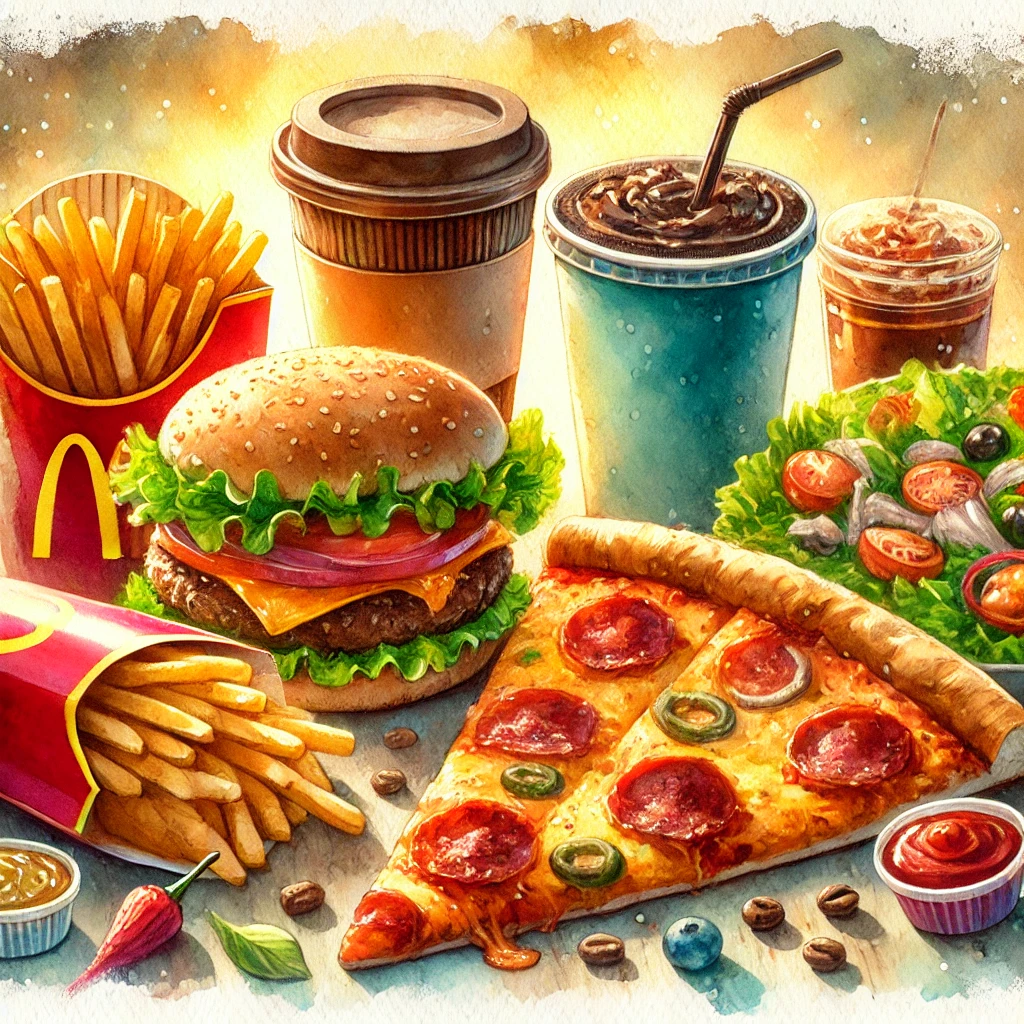Let me take you back to a time when the internet was a simpler place. When people logged on with dial-up connections, heard the familiar screech of the modem, and waited with the quiet anticipation of connecting to a world beyond. It was the early 2000s, and a new era was dawning—the birth of blogging. Independent voices, bedroom entrepreneurs, and niche experts discovered a thrilling new platform where they could write about what they loved, teach what they knew, and build a small, personal corner of the internet all their own.
And, if you can believe it, people actually read those blogs. They didn’t just scroll, skim, and forget in the next moment. They subscribed, they bookmarked, they engaged. They wrote comments that were longer than tweets and sent emails to bloggers they admired, not with a quick “Nice post!” but with entire paragraphs, opening up real conversations. These weren’t just casual fans—they were people who found connection in words, in stories, in a voice they trusted. But as time marched on, something changed.
You might remember when the giants of social media began staking their claim. Facebook, Twitter, Instagram—each came onto the scene and offered instant connection, quick feedback, and faster, snappier content. The allure of these platforms was undeniable, and the shift was inevitable. People moved away from blogs and toward these new spaces, craving immediate likes, shares, and dopamine hits. Blogs were quickly seen as “old-school,” clunky, and irrelevant. Readers and writers alike moved on, leaving blogs to collect dust like relics of a lost age.
But I’m here to tell you a different story—a story about why blogging didn’t truly die. It simply went into hibernation, and now it’s waiting for those who see its untapped potential to bring it back. This isn’t just a call to resurrect a medium; it’s an invitation to reclaim a powerful, human way of connecting in an increasingly disconnected world. Because the world needs blogging again, maybe now more than ever.
The Rise and Fall of Blogging (And What Really Happened)
If you were there during blogging’s heyday, you know the thrill. It was like the Wild West—anyone with a keyboard could carve out a piece of the internet and make it their own. Early bloggers didn’t worry about SEO, algorithms, or ad revenue. They wrote because they had something to say. They wrote to share ideas, build communities, and connect with others who were just as passionate. They weren’t worried about hitting some arbitrary number of monthly visitors or driving conversions. They cared about being heard.
As the years went on, things started to change. SEO, the rise of Google, and the first inklings of content monetization reshaped the landscape. People realized they could actually make money from their blogs, which brought new, sometimes darker intentions to the table. And so, the nature of blogging began to shift. Where once it was a free-for-all of creativity and passion, it became a place of keyword stuffing, listicles, and endless “How To” posts designed more to capture clicks than to provide real value.
When social media came onto the scene, it seemed like the final nail in the coffin. Why spend hours writing a blog post when you could send a quick tweet, post a photo, or film a 30-second clip? Content creation became instant, fast, and snackable. Our attention spans shrank to match. Blogs became seen as long-winded, “out of touch,” and too time-consuming. We wanted quick hits of content, not long reads that took time and thought to digest.
The truth is, blogging didn’t die because people stopped wanting real content. Blogging died because it lost its soul. In the race for clicks, views, and ad revenue, the personal, genuine nature of blogging fell by the wayside. The space became overcrowded, and bloggers started competing not for the most meaningful connections, but for the most profitable ones. And, over time, that relentless push for monetization dulled the magic that blogging once held.
But that doesn’t mean blogging is gone for good. No, blogging is still here, waiting for those brave enough to recognize its power. Because in a world saturated with superficial content, the world needs deep, meaningful blogging again. It needs authentic voices willing to say what matters—not just what trends.
Why the World Needs Blogging Now More Than Ever
In today’s world, we’re bombarded with more information than we can possibly absorb. We get snippets, soundbites, and snapshots, but rarely do we get depth. Social media is like fast food: quick, satisfying in the moment, but rarely nourishing. We consume and move on, forgetting what we saw almost as soon as we scroll past. But blogs—real, thoughtful blogs—offer something different. They offer substance. They offer stories. They offer connection.
Today, people are more skeptical of information than ever. We’re living in a time of “fake news,” misinformation, and a growing distrust of the mainstream media. People are hungry for something they can trust. They want someone they can turn to, someone who isn’t just chasing the latest trend or controversy. They want depth, authenticity, and quality—and that’s where blogs come in.
Unlike social media posts, which are often fleeting and meant to capture attention only for a few seconds, blogs offer a deeper, more lasting experience. When you read a well-written blog post, you’re engaging with an idea on a deeper level. You’re investing time, and in return, you’re getting a more complete understanding of a topic, a more nuanced view, and a chance to connect with the person behind the words.
And let’s not forget community. While social media often feels like shouting into a void, blogs foster real conversation. When readers comment on a blog post, they’re not just reacting—they’re engaging. They’re taking the time to contribute to a dialogue. They’re building a relationship with the writer and with each other. This kind of community is rare on social media, but it’s still alive and well in the world of blogging.
But the most compelling reason to resurrect blogging? SEO. Yes, that’s right. Search engines still value high-quality, long-form content. They want to surface in-depth, trustworthy articles, and they prioritize content that provides real value. That’s why, despite everything, blogs continue to show up on the first page of Google for a huge range of searches. A blog isn’t just a place to share your thoughts—it’s a powerful tool for building an audience and getting found.
The New Rules for Resurrecting Blogging (And How YOU Can Succeed)
So, if you’re ready to bring blogging back to life, here’s what you need to know. This isn’t 2005. The world has changed, and the rules of blogging have changed with it. But if you follow these new rules, you’ll find that there’s still a place for blogs in today’s world—and that place is more important than ever.
Rule #1: Build a Devoted Audience, Not Just Traffic
This is the biggest difference between blogging today and blogging back in the day. In the early days of blogging, all you needed was traffic. If you got enough visitors, you’d get comments, shares, and maybe even a little ad revenue. But today, traffic alone isn’t enough. You need a loyal, devoted audience. These are the people who will come back to your blog again and again. They’re the ones who will comment, share, and spread the word about your work. They’re your true supporters, and they’re the ones who will make your blog sustainable in the long run.
So, how do you build this kind of audience? By being authentic, consistent, and valuable. People can tell when you’re just trying to get clicks, and they’re not interested. But if you write with passion, honesty, and a genuine desire to provide value, people will respond. They’ll become part of your community, and they’ll stick around because they know you’re the real deal.
Rule #2: Embrace Originality and Authenticity
When you look at the most successful blogs today, one thing stands out: they’re unique. They don’t just follow trends; they set them. They don’t just churn out the same tired content you see everywhere else; they bring something new to the table. To succeed in blogging today, you need to be original. You need to have a unique voice, a fresh perspective, and a willingness to be yourself.
Remember, people don’t just read blogs for information—they read them for connection. They want to feel like they know you, like they’re part of something special. So don’t be afraid to let your personality shine through. Tell stories, share your experiences, and don’t worry too much about being “professional.” People connect with people, not with perfectly polished content.
Rule #3: Consistency is Key
One of the biggest challenges in blogging is staying consistent. It’s easy to start a blog with enthusiasm, but over time, life gets in the way, inspiration wanes, and posts become sporadic. If you want to succeed, you need to show up consistently. This doesn’t mean you have to post every day, but it does mean you need to establish a schedule that works for you and stick to it.
Consistency builds trust. When readers know they can rely on you to post regularly, they’re more likely to return. And the more they return, the more they’ll connect with your content. So set a realistic schedule, plan your content in advance, and make blogging a priority.
Rule # 4: Monetize, But Stay True
Monetizing a blog is more challenging than it used to be, but it’s still possible—and for many, it’s essential. But there’s a balance to be struck. Readers can tell when a blog is driven solely by the pursuit of profit, and they don’t like it. They want to feel like they’re getting something of value, not being sold to.
If you’re going to monetize, do it in a way that feels authentic and aligns with your values. There are many ways to make money from a blog—ads, affiliate marketing, sponsored posts, selling products or services. Choose the options that make sense for your audience and don’t compromise the integrity of your content. Remember, trust is hard to build but easy to lose.
Practical Steps to Resurrect Your Blog
If you’re ready to take the plunge, here are some actionable steps to get your blog off the ground:
Step 1: Find Your Niche and Message
Choose a topic you’re passionate about and have authority in. Don’t try to appeal to everyone—focus on a specific audience with specific interests. The more niche you are, the easier it is to stand out.
Step 2: Create Cornerstone Content
Start with a few in-depth, high-quality posts that represent the core of your blog. These should be evergreen pieces that provide real value and serve as the foundation of your blog. Think of them as your “pillar” posts—the articles you want to be known for.
Step 3: Engage Directly with Your Audience
Build community by interacting with your readers. Respond to comments, encourage discussion, and create opportunities for connection. An email newsletter is a great way to keep in touch and build a loyal following.
Step 4: Adapt for SEO and User Experience
Pay attention to SEO, but don’t obsess over it. Focus on quality content that serves your audience. Make your blog easy to navigate, mobile-friendly, and visually appealing. Readers should feel comfortable and engaged while they’re on your site.
Why You (Yes, YOU) Should Be the One to Resurrect Blogging
Blogging isn’t just a medium—it’s a chance to make a real impact. In a world of fleeting content, a blog can be a lasting legacy, a place where you share your thoughts, connect with others, and leave a mark. The world needs more authentic voices, more deep connections, and more spaces for real conversation. Social media may be quick, but a blog is timeless.
So, ask yourself: What kind of mark do you want to leave? Because blogging isn’t just about clicks or followers. It’s about legacy. It’s about creating something that matters. And it’s waiting for someone just like you to bring it back to life.




